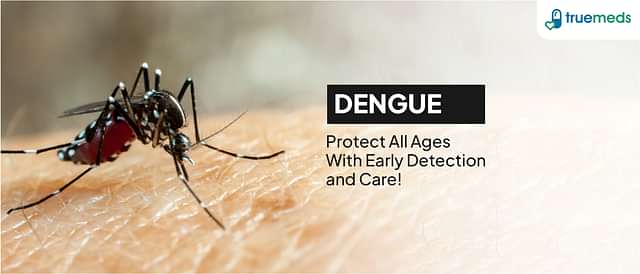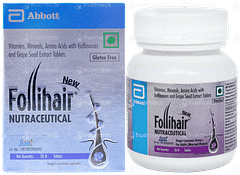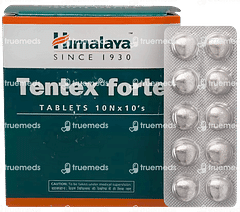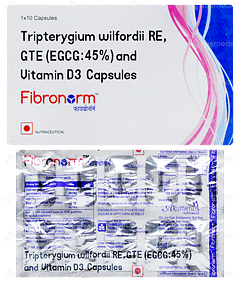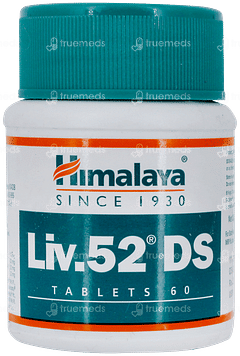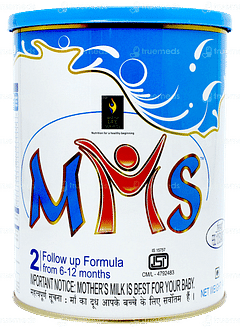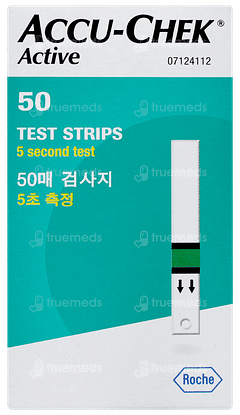Gallstones
Gallstones are solid lumps that develop in the gallbladder when digestive fluids harden. They can be as small as a grain of sand or as big as a golf ball. If they block the bile ducts, they may cause severe pain and other problems. Gallstones form due to an imbalance in the substances that make up bile. The treatment for gallstones depends on their size, number, and how much trouble they cause.
Last updated on : 16 Apr, 2025
Read time : 14 mins
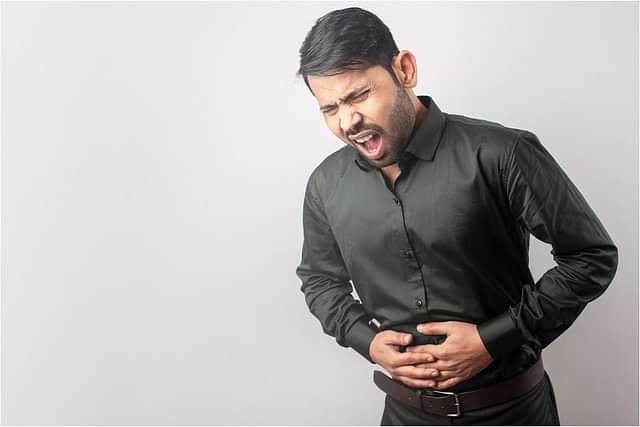
Overview of Disease
Gallstones are a common digestive disorder that affects millions of people worldwide. These small, hardened deposits form in the gallbladder, a small organ located just beneath the liver. When gallstones block the bile ducts, they can cause severe pain, inflammation, and even life-threatening complications. Understanding the causes, symptoms, and treatment options for gallstones is crucial for maintaining good digestive health.
What are Gallstones?
Gallstones, also known as cholelithiasis are solid, pebble-like deposits that develop in the gallbladder. They are formed when there is an imbalance in the composition of bile, a digestive fluid produced by the liver and stored in the gallbladder. Bile contains water, salts, fats, proteins, and bilirubin, a yellowish pigment produced during the breakdown of red blood cells. When bile becomes supersaturated with cholesterol or bilirubin, these substances can precipitate out of the solution and form microscopic crystals. Over time, these crystals can grow, aggregate, and fuse to form macroscopic stones.
Key Factors about Gallstones
| Category | Details |
| Also Referred as | Cholelithiasis, Gallbladder attack, Biliary colic, Gallstone attack, Biliary calculus |
| Commonly Occurs In | Female sex, Native Americans, Hispanics, Over age 40, Overweight, Family history of gallstones |
| Affected Organ | Gallbladder, bile ducts |
| Type | Cholesterol stones, pigment stones (bilirubin) |
| Common Signs | Upper abdominal pain, Fever, Jaundice, Nausea, Vomiting, Clay-coloured stools, Back pain between shoulder blades, Right shoulder pain |
| Consulting Specialist | Gastroenterologist, General Surgeon |
| Treatement Procedures | Gallbladder removal (surgery), Medicines to dissolve cholesterol stones, ERCP, Lithotripsy (rarely) |
| Managed By | Gastroenterologist, General Surgeon |
| Mimiciking Condition | Peptic ulcer disease |
Types of Gallstones
Here are the types of gallstones:
Cholesterol Gallstones
Cholesterol gallstones are the most common type, accounting for about 80% of cases.
They are usually yellow-green due to being composed mainly of hardened cholesterol.
Women and obese individuals are more likely to develop cholesterol gallstones.
Pigment Gallstones
Pigment gallstones are less common and tend to be dark in colour because they are made of bilirubin.
They are more likely to develop in patients with liver diseases, such as cirrhosis or biliary tract infections.
In some cases, people may have a combination of both cholesterol and pigment stones.
Early Signs of Gallstones
Here are some early signs to look out for:
Pain Patterns:
Sudden and severe pain in the upper right or middle abdomen.
Pain between the shoulder blades.
Digestive Issues:
Nausea and vomiting.
Flatulence and intolerance to fatty foods.
Other Indicators:
Yellowing of the skin and eyes.
Clay-coloured stools.
Symptoms of Gallstones
At first, gallstones may not cause any symptoms. However, when they grow larger or block the bile ducts, they can trigger painful episodes, often after eating fatty foods or during the night. Symptoms may vary for each person but commonly include:
Common Symptoms
- Severe Upper Abdominal Pain: A sudden, sharp pain in the upper right side of the abdomen that can last from 15 minutes to several hours.
- Pain Spreading to the Shoulder: The pain may extend to the right shoulder or between the shoulder blades.
- Nausea and Vomiting: Digestive discomfort often accompanies gallstone attacks.
- Intolerance to Fatty Foods: Eating greasy foods may worsen symptoms.
Additional Symptoms
- Jaundice: A yellowing of the skin and eyes due to blocked bile flow.
- Clay-Colored Stools: A sign of bile duct obstruction.
- Fever and Chills: May indicate an infection or gallbladder inflammation.
If you experience severe pain, jaundice, or fever, seek medical attention immediately, as untreated gallstones can lead to complications.
Stages of Gallstones
Here are the stages of gallstone development:
I. Lithogenic State
The lithogenic state is the pre-gallstone stage, where conditions in the gallbladder favour the formation of gallstones, but none have yet formed. At this stage, preventive measures such as diet changes can help prevent the development of gallstones. Risk factors for the lithogenic state include obesity, rapid weight loss, high-fat diets, and certain medications.
II. Asymptomatic Gallstones
Asymptomatic gallstones are gallstones that have formed but do not cause any symptoms. Many people have asymptomatic gallstones and may never know they have them unless they are discovered during an ultrasound or other imaging test. In most cases, asymptomatic gallstones do not require treatment unless they begin to cause symptoms.
III. Symptomatic Gallstones
Symptomatic gallstones are characterized by episodes of biliary colic, which is intense pain in the upper right quadrant of the abdomen that can radiate to the back or right shoulder. The pain is usually triggered by eating a fatty meal and can last from minutes to hours. Other symptoms of gallstones may include nausea, vomiting, fever, and yellowing of the skin and eyes (jaundice). Symptomatic gallstones often require treatment to prevent complications.
IV. Complicated Cholelithiasis
Complicated cholelithiasis is the most severe stage of gallstone disease, where gallstones cause complications such as blockage of the bile ducts (choledocholithiasis), inflammation of the gallbladder (cholecystitis), or inflammation of the pancreas (pancreatitis). These conditions can be life-threatening and require immediate medical attention. Symptoms of complicated cholelithiasis may include severe abdominal pain, high fever, chills, and jaundice. Treatment for complicated cholelithiasis usually involves surgical removal of the gallbladder (cholecystectomy) and may also require antibiotics and other medications to manage symptoms and prevent further complications.
Causes of Gallstones
Gallstones form when there is an imbalance in the chemical composition of bile inside the gallbladder.
The primary causes include an excess of cholesterol or bilirubin in the bile, which can lead to the formation of crystals. If the gallbladder doesn't empty completely or frequently enough, the bile can become concentrated, further contributing to gallstone development. Over time, these tiny crystals can grow into solid stones ranging from the size of a grain of sand to a golf ball. Approximately 80% of gallstones are composed of cholesterol, while the remaining 20% are made of bilirubin.
Risk Factors
Several factors can increase your likelihood of developing gallstones:
Gender: Women, especially those who have had children, take the combined pill, or undergo high-dose oestrogen therapy, are at higher risk.
Age: Being 40 years or older increases the risk of gallstones.
Ethnicity: Native Americans and people of Mexican descent are more prone to gallstones.
Weight: Being overweight or obese is a significant risk factor.
Family history: Having a close relative with gallstones increases your risk.
Medical conditions: Cirrhosis, primary sclerosing cholangitis, Crohn's disease, and certain blood disorders can contribute to gallstone formation.
Medications: Oestrogen-containing medications and antibiotics like ceftriaxone can increase risk.
Diet and lifestyle: A high-fat, high-cholesterol, low-fibre diet, sedentary lifestyle, and rapid weight loss can all contribute to gallstone development.
Complications
If gallstones cause symptoms or block bile ducts, they can lead to various complications.
Inflammation of the gallbladder, known as cholecystitis, occurs when a gallstone becomes lodged in the neck of the gallbladder, causing severe pain and fever.
Gallstones can also block the common bile duct, resulting in intense pain, jaundice, and bile duct infection (choledocholithiasis). In some cases, a gallstone may block the pancreatic duct, leading to inflammation of the pancreas (pancreatitis). Prompt treatment is crucial to prevent these complications from worsening and causing long-term health issues.
Prevention of Gallstones
While some risk factors for gallstones are beyond your control, there are several steps you can take to reduce your likelihood of developing them.
Maintaining a healthy weight through a balanced diet and regular exercise is crucial. Aim to eat a diet high in fibre and healthy fats while limiting your intake of refined carbohydrates and saturated fats. If you need to lose weight, do so gradually, as rapid weight loss can increase your risk of gallstones.
If you are at high risk due to other factors, your doctor may recommend medications or supplements to help prevent gallstone formation.
Diagnosis & Tests
Diagnosing gallstones involves a combination of medical history, physical examination, and various diagnostic tests.
Initial consultation will include a healthcare professional asking about symptoms, medical history, and family history of gallstones. A physical exam may include checking for pain in the upper right abdomen, particularly through Murphy's sign test, which can indicate gallbladder inflammation.
Lab tests often check for signs of infection, inflammation, or liver function abnormalities. These may include blood tests to check liver enzymes, amylase, and lipase levels and a complete blood count (CBC) to look for infection.
Imaging tests are crucial for confirming the presence of gallstones. The most common imaging test is an ultrasound, which uses high-frequency sound waves to create images of the gallbladder and bile ducts. This test is quick, painless, and highly effective in detecting gallstones.
Other imaging tests include computed tomography (CT) scans, which can show gallstones and complications such as infection or blockage of the gallbladder or bile ducts; magnetic resonance imaging (MRI) and magnetic resonance cholangiopancreatography (MRCP), which provide detailed images of the bile ducts and surrounding organs; and hepatobiliary iminodiacetic acid (HIDA) scans, also known as cholescintigraphy, which assess the gallbladder's function and bile flow.
Endoscopic retrograde cholangiopancreatography (ERCP) is a more invasive procedure that combines endoscopy and X-rays to examine the bile and pancreatic ducts. It is often used for therapeutic purposes, such as removing stones from the bile duct, but it also provides valuable diagnostic information.
Treatment & Management
If your gallstones don’t cause any problems, you won’t need treatment. But if they block your bile ducts, your doctor will recommend removing them completely, not just clearing the blockage. This is because once gallstones cause a blockage, they are likely to do it again.
Most people with gallstone problems need surgery to remove them. Surgery is the only way to prevent future issues. However, if you can’t or don’t want surgery, other treatments like medications and certain procedures may help manage the condition. Here are some ways to treat gallstones:
1. Medication for Gallstone
Ursodeoxycholic acid/Ursodiol and chenodeoxycholic acid/Chenodiol are oral medications that can dissolve cholesterol stones. However, this treatment is only effective for small, cholesterol-based stones and may take months or years to work. There is also a high risk of gallstones recurrence once the medication is stopped.
2. Surgical Removal of the Gallbladder
The most widely used treatment for symptomatic gallstones is surgical removal of the gallbladder, known as cholecystectomy. Laparoscopic cholecystectomy is the preferred method, involving several small incisions and the use of special instruments and a video camera to remove the gallbladder. This method reduces hospital stay and recovery time compared to traditional open surgery.
3. Nonsurgical Therapy
For patients who are unable or unwilling to undergo surgery, nonsurgical therapies may be considered. These include shock wave therapy to fragment the stones, followed by bile salt administration to dissolve the fragments, and attempts to remove gallstones during an ERCP. However, these treatments are less effective and have a higher risk of gallstone recurrence compared to surgical removal of the gallbladder.
Living with Disease
Here are some tips on how you can live with gallstones:
Lifestyle Changes
Making lifestyle changes can help manage gallstones symptoms and prevent complications. Maintaining a healthy weight through a balanced diet and regular exercise is crucial, as obesity is a significant risk factor for developing gallstones. Losing weight gradually, rather than through rapid weight loss diets, is recommended to prevent gallstone formation.
Dietary Modifications
Eating a low-fat, high-fibre diet can help reduce the risk of gallstone formation and alleviate symptoms. This involves limiting the consumption of saturated and trans fats, such as those found in fried foods, processed snacks, and fatty meats. Instead, opt for lean proteins, fruits, vegetables, and whole grains. Consuming moderate amounts of healthy fats, such as those found in nuts, seeds, and olive oil, can help maintain gallbladder function.
Pain Management
For individuals experiencing gallstones symptoms, over-the-counter pain relievers like paracetamol or ibuprofen can help manage mild to moderate pain. Applying a warm compress to the affected area may also provide relief. However, if pain is severe or accompanied by other symptoms like fever or jaundice, it is essential to seek medical attention promptly.
Regular Check-ups
If you have been diagnosed with gallstones, regular check-ups with your healthcare provider are essential to monitor your condition and prevent complications. This is particularly important if you have chosen not to undergo surgical treatment or if you have a higher risk of developing complications due to other health factors.
When to See a Doctor?
It is essential to seek medical attention if you experience symptoms that may indicate the presence of gallstones or complications related to gallbladder disease. Some of the key signs and symptoms to watch out for include:
Severe, persistent pain in the upper right abdomen that may radiate to the back or right shoulder. This pain may intensify after eating fatty meals and can last for several hours.
Nausea and vomiting accompanying the abdominal pain.
Jaundice, which is characterised by yellowing of the skin and the whites of the eyes. This may indicate a blockage of the bile ducts caused by gallstones.
Fever and chills, which may signify an infection in the gallbladder or bile ducts, such as cholecystitis or cholangitis.
Clay-coloured stools or dark urine, which can also be signs of a bile duct obstruction.
Abdominal bloating, gas, and indigestion that persist or worsen over time.
Key Takeaways
Gallstones are hardened deposits of bile that can form in the gallbladder or bile ducts
Common symptoms include abdominal pain, nausea, vomiting, and indigestion
Diagnosis involves medical history, physical examination, and imaging tests like ultrasound or CT scans
Treatment options range from watchful waiting for asymptomatic cases to surgical removal of the gallbladder (cholecystectomy) for symptomatic patients
Lifestyle modifications, such as a low-fat diet and stress reduction, can help manage symptoms and improve overall well-being
Seek medical attention promptly if severe or persistent symptoms develop, as they may indicate serious complications
FAQs
What leads to the formation of gallstones?
Gallstones form due to an imbalance in bile composition inside the gallbladder, typically caused by high cholesterol or bilirubin levels, or inadequate gallbladder emptying.
What are some common indicators of gallstones?
Common gallstone symptoms include biliary colic (intense abdominal pain), gallbladder inflammation (cholecystitis), and blockage of the common bile duct or pancreatic duct.
Can gallstones lead to severe health issues?
While often asymptomatic, gallstones can cause serious complications like cholecystitis, bile or pancreatic duct blockage, pancreatitis, and rarely, gallbladder cancer.
What are the treatment options for gallstones?
The primary treatment for symptomatic gallstones is surgical removal of the gallbladder (cholecystectomy), which can be done through minimally invasive laparoscopic surgery or open surgery.
Are there any dietary factors that contribute to gallstone formation?
Foods high in cholesterol and saturated fats, like fried foods, red meat, and full-fat dairy products, can increase the risk of developing gallstones.
Can any foods help dissolve gallstones?
While no specific food can melt gallstones, a diet high in fiber, healthy fats, and plant-based foods may help prevent their formation and manage symptoms.
Is it safe to leave gallstones untreated?
If gallstones are asymptomatic, treatment may not be necessary. However, if symptoms appear or complications develop, prompt medical attention and treatment are essential.
References
National Institute of Diabetes and Digestive and Kidney Diseases. (2017). Definition & facts for gallstones. https://www.niddk.nih.gov/health-information/digestive-diseases/gallstones/definition-facts
Njeze, G. E. (2013). Gallstones. Nigerian Journal of Surgery, 19(2), 49-55. https://doi.org/10.4103/1117-6806.119236
Wang, D. Q. H., & Afdhal, N. H. (2004). Genetic analysis of cholesterol gallstone formation: Searching for Lith (gallstone) genes. Current Gastroenterology Reports, 6(2), 140-150. https://doi.org/10.1007/s11894-004-0042-1
Seattle Children's. (n.d.). Gallstones. https://www.seattlechildrens.org/conditions/gallstones/
Siddiqui, A. A. (2022, May 2). Gallstones (cholelithiasis). Medscape. https://emedicine.medscape.com/article/175667-overview
Check Related Salts
Browse Other Conditions
Latest health articles
Top Health Essentials
Disclaimer
Top-Selling Medicines:
...View more
Top-OTC medicines:
...View more
Company
About UsHealth ArticleHealth StoriesDiseases & Health ConditionsAll MedicinesAll BrandsNeed HelpFAQSubscribe
Registered Office Address
Grievance Officer
Download Truemeds

Contact Us
Our customer representative team is available 7 days a week from 9 am - 9 pm.
v3.7.10
Our Payment Partners










